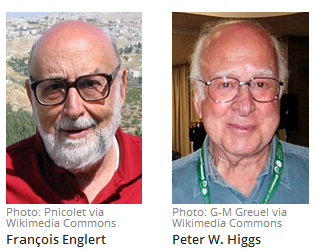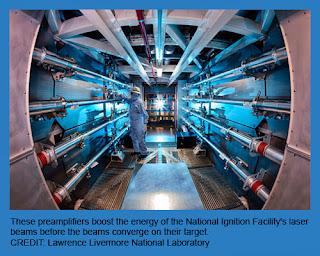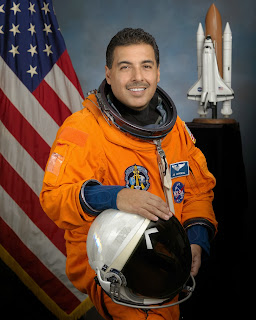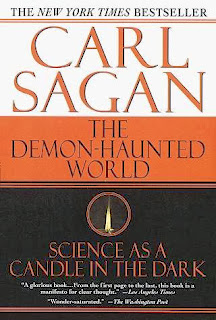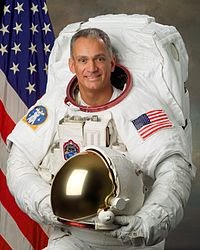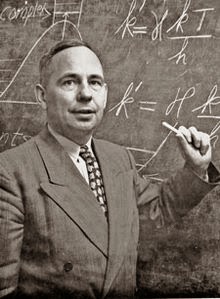The 'Dark God's Gift' is far from over! Monday the saga continues with H. Wolfgang Porter's dark fantasy short story, 'Dark God's Gift: Power of Two'. A caravan carrying two runaway lovers from prominent families disappears in the bandit infested forest near the mutual borders of three provinces. Dispatched to find the pair is the infamous Bounty Hunter Wolfwalker! However, Wolfwalker is not alone as others are searching for the caravan. But, unknown to all is the disappearance has the vile taint of the 'Dark God's Gift' permeating a darker mystery. Can Wolfwalker uncover the fate of the lovers? Better yet, will he have a choice? All will be revealed in the next installment of the 'DARK GOD'S GIFT!'
All Posts (6509)
Ronald T. Jones' Space Opera 'Dark God's Gift: A Dark Path' concludes as the Galactic Regent Alec Dishman finds himself at the center of a bloody coup attempt! Enemies surround Proctor Dishman but worst of all, his greatest enemy is all too familiar to him. Yet, with the Power of the Dark God's Gift the Galaxy's Ruler plans to crush the rebellion and cut his name into the firmament of history itself!
Two independent teams of physicists have used small pieces of glass etched with tiny gratings to accelerate electrons through enormous electric-field gradients. One team boosted the kinetic energy of the electrons at about the same rate as a conventional particle accelerator, while the other achieved 10 times that speed. The technology could one day be used to build table-top accelerators that are much smaller than conventional devices, bringing the benefits of particle-beam therapy to a wider range of cancer patients.
Laser-driven particle acceleration has been the subject of intense research over the past two decades, having been used to accelerate electrons, protons and other charged particles. Although several different techniques can be used, they all involve firing an intense pulse of laser light at a target. The intense electric field of the pulse separates electrons from the positively charged nuclei, creating a very strong electric field that can then be used to accelerate charged particles.
This latest breakthrough was made independently by two groups: one in the US and the other in Germany. The US team was led by Robert Byer of Stanford University and included physicists at the SLAC National Accelerator Laboratory, the University of California, Los Angeles and the Tech-X Corporation. In their set-up, a beam of electrons is first accelerated to a kinetic energy of about 60 MeV moving at near to the speed of light using the Next Linear Collider Test Accelerator Facility at SLAC. The other team was led by John Breuer and Peter Hommelhoff of the Max Planck Institute of Quantum Optics in Garching, whose device works for much less energetic 28 keV electrons travelling at about one-third the speed of light.
Physics World: Etched glass could create table-top particle accelerators
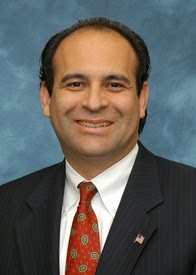 |
| Chris Hernandez, vice president of Advanced Systems at Northrop Grumman Aerospace Systems received the 2013 HENAAC Engineer of the Year Award. |
October 7: Northrop Grumman Corporation employee Chris Hernandez was honored last Friday as the Engineer of the Year at the 25th anniversary HENAAC conference put on by Great Minds in STEM(TM). The conference recognizes the best and brightest science, technology, engineering, and math professionals on a national level who serve as role models to inspire young people to pursue technical careers with a focus on the Hispanic community.
He earned a bachelor's degree in electrical engineering from California State University, Long Beach and a master's degree in management from the Massachusetts Institute of Technology's Sloan Fellows program. Hernandez is on the board of directors of the Mexican American Opportunity Foundation and is active with the Boy Scouts of America.
Market Watch: Northrop Grumman Chris Hernandez
See also: Great Minds in STEM
Theodore Brewster Taylor (July 11, 1925 – October 28, 2004) was a Mexican-born, American theoretical physicist and prominent nuclear weapon designer who later in life became a nuclear disarmament advocate.
Taylor was born in Mexico City, Mexico, the son of a daughter of a congregationalist missionary and a director of the YMCA. He spent much of his childhood in Cuernavaca in the state of Morelos, south of Mexico City. From 1943 to 1946 he served on active duty in the United States Navy. He graduated with a bachelor's degree from the California Institute of Technology, pursued graduate studies at the University of California, Berkeley, and received a PhD in theoretical physics from Cornell University in 1954.
From 1948 to 1956 he worked at Los Alamos National Laboratory, where he gained some fame as a designer of small, efficient nuclear weapons. He was assigned to explore the bounds of fission weapons in an era when most weapons designers were focused on fusion. In 1956 he moved to General Atomics, where he directed Project Orion, with his friend Lew Allen as contract manager. He also was involved in the design of small nuclear reactors to produce radioactive isotopes for medical use, the TRIGA reactors. He led the team that designed the largest pure fission bomb ever detonated, the Super Oralloy Bomb ("SOB"), which had a yield of 500 kilotons in its only test (Ivy King). He similarly designed the small "Scorpion" on the small end of the scale which is documented in John McPhee's The Curve of Binding Energy. This knowledge of bombs requiring minimal amounts of fissile material contributed to his concerns about nuclear terrorism.
After the end of Project Orion, he worked for the Defense Atomic Support Agency, involved with controlling the US stockpile of nuclear weapons. Beginning in 1966 he advocated nuclear disarmament, and worked as a consultant to the United States Atomic Energy Commission from 1966 to 1968 evaluating the International Atomic Energy Agency in regard to nuclear non-proliferation. He worked as a visiting professor at University of California, Santa Cruz and Princeton University; in addition to nuclear proliferation, a topic on which he wrote several books, he studied renewable energy and energy conservation, including ice pond technology. Taylor was featured in the 1984 PBS series, The Voyage of the Mimi, starring a young Ben Affleck.
Wikipedia: Ted Taylor
Announced yesterday...
The Nobel Prize in Physics 2013 was awarded jointly to François Englert and Peter W. Higgs "for the theoretical discovery of a mechanism that contributes to our understanding of the origin of mass of subatomic particles, and which recently was confirmed through the discovery of the predicted fundamental particle, by the ATLAS and CMS experiments at CERN's Large Hadron Collider"
The Nobel Prize in Physics 2013
Physics Today: Francois Englert and Peter Higgs share 2013 Physics Nobel, Charles Day
And we have Satyendranath Bose, the Indian after whom the boson is named.
Nanos gigantium humeris insidentes...I can't describe the feeling. The Nobel is more than a noble endeavor: it is the culmination of a lifetime of adhering to and triumph of the Scientific Method, testing and retesting hypotheses; weathering the withering criticism (and in many cases, wagers) against your theories being incorrect, and finding out in the lab that they are correct, unique and novel. I am astonishingly happy for these men, their work and the work they're sure to inspire; physicists working in labs and researchers yet born. It is emotional, not unlike witnessing a birth of a new chapter in our understanding of the universe.
Start noticing at 0:51
NASA ASTRONAUT (FORMER)
PERSONAL DATA: Born June 27, 1951, in Albuquerque, New Mexico. Married to the former Marianne Sue Cremer of Jefferson City, Missouri. They have three children. Recreational interests include camping, woodworking, and racquetball.
EDUCATION: Graduated from Valley High School, Albuquerque, New Mexico, in 1969; received a bachelor of science degree in aeronautical engineering from the U.S. Air Force Academy in 1973, and a master of arts degree in management from Webster College in 1977.
ORGANIZATIONS: Member of the Society of Experimental Test Pilots, the Air Force Association, the U.S. Air Force Academy Association of Graduates, and the Society of Space Explorers.
SPECIAL HONORS: NASA Outstanding Leadership Medal, NASA Exceptional Achievement Medal, Two NASA Space Flight Medals, 1990 Congressional Hispanic Caucus Award, Awarded Aviation Week and Space Technology Aerospace Laureate in Space and Missiles for 1991, Hispanic Engineer magazine 1992 Hispanic Engineer of the Year National Achievement Award, Aviation Week and Space Technology Citation for Aerospace Laureate in Space and Missiles for 1994, 1994 selected by Hispanic Business magazine as one of the 100 most Influential Hispanics, selected by Hispanic Magazine for the 1995 Hispanic Achievement Award in Science, 1995 inductee into the International Space Hall of Fame, Distinguished Graduate of the USAF Academy; awarded the Defense Superior Service Medal, the Air Force Meritorious Service Medal, Air Force Commendation Medal with 1 Oak Leaf Cluster, National Defense Service Medal, and Air Training Command Master Instructor.
EXPERIENCE: Gutierrez was a member of the National Collegiate Championship Air Force Academy Parachute Team with over 550 jumps, and a Master Parachutist rating. After graduation from the Academy he completed undergraduate pilot training at Laughlin Air Force Base in Del Rio, Texas. He remained there as a T-38 instructor pilot from 1975 through 1977. In 1978 Gutierrez was assigned to the 7th Tactical Fighter Squadron at Hollomon Air Force Base, Alamagordo, New Mexico, where he flew the F-15 Eagle. He attended the USAF Test Pilot School in 1981 and was assigned to the F-16 Falcon Combined Test Force after graduation. While there, Gutierrez served as primary test pilot for airframe and propulsion testing on the F-16 aircraft. Test projects included the F-100 Digital Electronic Engine Control, F-16C & D Model Structural and Performance Testing, F-16 Maximum Performance Braking Tests, and F-16 Mobile Arrestment Qualification.
He has logged over 4,500 hours flying time in approximately 30 different types of airplanes, sailplanes, balloons, and rockets.
Researchers at Lawrence Livermore National Laboratory say they have tripled the number of neutrons produced by fusion in tiny capsules of deuterium and tritium and thus have moved the National Ignition Facility a step closer to its goal of sustained nuclear fusion. The 13 August firing of NIF's 192-beam laser yielded 3 × 1015 neutrons, whose total energy reached 8 kilo-joules. That output was nearly twice the 5 kJ of energy that produced the plasma in the peppercorn-sized sphere of fusion fuel, says Ed Moses, the lab's principal associate director for NIF.
The result puts NIF a factor of four to five away from ignition, says Moses; last fall the Department of Energy reported that NIF was an order of magnitude away from its goal. Only a factor-of-two increase in plasma energy will be needed to attain alpha heating, an intermediate milestone at which alpha particles from fusion reactions contribute twice as much energy to the plasma as the laser does.
Note the National Ignition Facility was the "warp core" engineering for the movie "Star Trek: Into Darkness." I've mentioned this before, as not only a means of diminishing our dependence on foreign oil, and thus volatile regions of the world: it could change our whole paradigm as a country and a species - heating, energy consumption, food prices at the grocers (determined by fossil fuel prices); income inequality...if we let it.
Of course, we'll have to get through the self-immolation also known as the government shutdown (I really tried to avoid mentioning that).
Physics Today: Lab reports big advance in laser fusion quest, David Kramer
BBC: Nuclear fusion milestone passed at US lab, Paul Rincon
NASA ASTRONAUT (FORMER)
PERSONAL DATA: Born August 7, 1962 in French Camp, California. Considers Stockton, California, to be his hometown.
EDUCATION: B.S., Electrical Engineering, University of the Pacific, 1984.
M.S., Electrical & Computer Engineering, University of California-Santa Barbara, 1986.
ORGANIZATIONS: Institute of Electrical and Electronic Engineers (IEEE), Society of Mexican American Engineers and Scientists (MAES).
SPECIAL HONORS: Ph.D. Science, University of the Pacific (honoris causa), 2006. NASA Service Awards (2002, 2003), Lawrence Livermore National Laboratory “Outstanding Engineer Award” (2001), Upward Bound National TRIO Achiever Award (2001), U.S. Department of Energy “Outstanding Performance Commendation” (2000), Society of Mexican American Engineers and Scientists (MAES) “Medalla de Oro” recipient for professional and community contributions (1999), Hispanic Engineer National Achievement Award, “Outstanding Technical Contribution” (1995), Graduate Engineering Minority Fellow (GEM) (1985), and Eta Kappa Nu Electrical Engineering Honor Society member.
This is archival information. Sadly, due to the unnecessary self-immolation AKA government shutdown, NASA.gov is currently offline.
NASA (Archive): Jose Hernández, PhD
I am admittedly, a Carl Sagan fan. As such, this book is not unfamiliar to me. As such, rereading it in trying times (what I will constantly refer to as the) self-immolation also known as government shutdown, his words are as poignant, as prescient as they were in the mid nineties when it was first published.
I completely avoided my "sermon soliloquy" Sunday, or tried to - see "self-immolation" above. Some paragraphs, sentences on my Kindle (unintentional Freudian slip) gave me pause. I share them without comment or edit, save underlined highlight:
For me, there are four main reasons for a concerted effort to convey science - in radio, TV, movies, newspapers, books, computer programs, theme parks, and classrooms - to every citizen. In all uses of science, it is insufficient - indeed it is dangerous - to produce only a small, highly competent, well-rewarded priesthood of professionals. Instead, some fundamental understanding of the findings and methods of science must be made available on the broadest scale.
- Despite plentiful opportunities for misuse, science can be the golden road out of poverty and backwardness for emerging nations. It makes national economies and the global civilization run. Many nations understand this. It is why so many graduate students in science and engineering at American universities - still the best in the world - are from other countries. The corollary, one that the United States sometimes fails to grasp, is that abandoning science is the road back into poverty and backwardness.
- Science alerts us to the perils introduced by our world-altering technologies, especially to the global environment on which our lives depend. Science provides an essential early warning system.
- Science teaches us about the deepest issues of origins, natures, and fates - of our species, of life, of our planet, of the Universe. For the first time in human history we are able to secure a real understanding of some of these matters. Every culture on Earth has addressed such issues and valued their importance. All of us feel goosebumps when we approach these grand questions. In the long run, the greatest gift of science may be in teaching us, in ways no other human endeavor has been able, something about our cosmic context, about where, when and who we are.
- The values of science and the values of democracy are concordant, in many cases indistinguishable. Science and democracy began - in their civilized incarnations - in the same time and place, Greece in the seventh and sixth centuries B.C. Science confers power on anyone who takes the trouble to learn it (although too many have been systematically prevented from doing so). Science thrives on, indeed requires, the free exchange of ideas; its values are antithetical to secrecy. Science holds to no special vantage points or privileged positions. Both science and democracy encourage unconventional opinions and vigorous debate. Both demand adequate reason, coherent argument, rigorous standards of evidence and honesty. Science is a way to call the bluff of those who only pretend to knowledge. It is a bulwark against mysticism, against superstition, against religion misapplied to where it has no business being. If we're true to its values, it can tell us when we're being lied to.
Related embed:
Science Fiction Writer Ronald T. Jones' contribution to the 'Dark God's Gift' anthology 'A Dark Path' begins today!
Far into the distant future, down on his luck Freelance Starship Captain Alec Dishman longs for the days when the United Empire was the greatest power in the galaxy. Now little more than a backwater, Alec is struggling to make ends meet. Despite his hard luck, Alec has a vision for restoring the Empire to its former glory. But to put his plan in motion, he's going to need to 'borrow' a few ships! Along with his sexy Avatar Fara and crew of combat modded androids, Alec has exactly what he needs to really get himself in trouble! Little does Alec know, his plan is about to take him down a path which will see him become a gradious hero or a blood-soaked tyrant when he receives the 'Dark God's Gift!'
JOHN D. OLIVAS (PH.D., P.E.) "DANNY”
NASA ASTRONAUT (FORMER)
PERSONAL DATA: Born in North Hollywood, California, 1966, and raised in El Paso, Texas. Married to the former Marie Schwarzkopf, also from El Paso, Texas. They have 5 children. Recreational interests include running, weightlifting, hunting, fishing and surfing.
EDUCATION: Graduate of Burges High School, El Paso, Texas; received a bachelor of science degree in mechanical engineering from the University of Texas-El Paso; a masters of science degree in mechanical engineering from the University of Houston and a doctorate in mechanical engineering and materials science from Rice University.
AWARDS: Six U.S. Patents; Four NASA Class One Tech Brief Awards; Five JPL-California Institute of Technology Novel Technology Recognitions; The University of Texas-El Paso Distinguished Alumnus, HENAAC Most Promising Engineer, McDonald’s Hispanos Triunfadores Life Time Achievement Award, NASA ASEE Summer Faculty Fellowship Award, Dow Life Saving Award.
EXPERIENCE: After graduating with his undergraduate degree, Olivas worked for the Dow Chemical Company as a mechanical/materials engineer responsible for performing equipment stress/failure analysis for the operating facilities. Upon completing his master's degree, Olivas pursued his doctorate while supporting engine coating evaluations for C-5 maintenance operations at Kelly Air Force Base. He also supported the Crew and Thermal Systems Directorate at NASA Johnson Space Center, evaluating materials for application to the next generation space suits.
Upon completing his doctorate, he received a senior research engineer position at the Jet Propulsion Laboratory (JPL) and worked in the development of tools and methodologies for nondestructively evaluating microelectronics and structural materials subjected to space environments. He was promoted to Program Manager of the JPL Advanced Interconnect and Manufacturing Assurance Program, aimed at evaluating the reliability and susceptibility of state-of-the-art microelectronics for use in future NASA projects. Throughout his career, he has authored and presented numerous papers at technical conferences and in scientific journals.
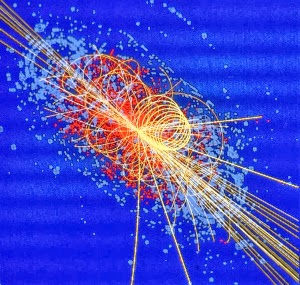 |
| The Higgs boson may have played a key role in the early Universe, including the creation of mysterious dark matter. CERN |
A key riddle in cosmology may be answered by the 2012 discovery of the Higgs boson — now a leading contender for the 2013 Nobel Prize in Physics on 8 October.
Two physicists suggest that the Higgs had a key role in the early Universe, producing the observed difference between the number of matter and antimatter particles and determining the density of the mysterious dark matter that makes up five-sixths of the matter in the Universe.
In a paper accepted for publication in Physical Review Letters [1], Sean Tulin of the University of Michigan in Ann Arbor and Géraldine Servant of the Catalan Institute for Research and Advanced Study in Barcelona, Spain, say that there may have been an asymmetry in the early Universe between the Higgs boson and its antimatter counterpart, the anti-Higgs.
Link to an interesting article about a lake in Tanzania ... maybe it can inspire some stories.
Warning: The pictures are a bit creepy.
http://gizmodo.com/any-animal-that-touches-this-lethal-lake-turns-to-stone-1436606506
Henry Eyring (February 20, 1901 – December 26, 1981) was a Mexican-born American theoretical chemist whose primary contribution was in the study of chemical reaction rates and intermediates.
A prolific writer, he authored more than 600 scientific articles, ten scientific books, and a few books on the subject of science and religion. He received the Wolf Prize in Chemistry in 1980 and the National Medal of Science in 1966 for developing the Absolute Rate Theory or Transition state theory of chemical reactions, one of the most important developments of 20th-century chemistry. Several other chemists later received the Nobel prize for work based on it, and his failure to receive the Nobel prize was a matter of surprise to many.[1] The Royal Swedish Academy of Sciences apparently did not understand Eyring's theory until it was too late to award him the Nobel; the academy awarded him the Berzelius Medal in 1977 as partial compensation.[2] Sterling M. McMurrin believed he should have received the Nobel Prize but was not awarded it because of his religion.[3]
He was also elected president of the American Chemical Society in 1963 and the Association for the Advancement of Science in 1965.
Wikipedia: Henry Eyring
 |
| The effect of a gravitational wave on a ring of particles, as space-time is compressed and stretched. Source |
Observations of the Cosmic Microwave Background (CMB) have already revolutionized modern cosmology, providing evidence that the nature of our Universe can be beautifully described by six fundamental parameters. And yet, the authors of this work say that the CMB has even more insight to offer, this time into how gravity behaves on microscopic scales. It is believed that the gravitational force is transmitted by a hypothetical, fundamental particle called the graviton, similar to how the photon carries the electromagnetic force. Unfortunately, the gravitational force is much weaker than the electromagnetic force1, and while scientists can easily measure a single photon, the prospects of detecting a single quantum of gravity are much graver. However, the authors argue that precise measurements of the CMB can do just that, proving the existence of the graviton and the quantized nature of gravity. Such a detection would provide evidence for the unification of general relativity and quantum mechanics, one of the most profound problems in current theoretical physics.
Astrobites: Detecting the Quantization of Gravity
I got tired of there not being any good animated adventure shows on TV.
I got tired of them not featuring or, usually, even HAVING any black characters in them when they are on the air.
I also got tired of not having enough money to hire good animators to make stuff from my scripts (what I do really well is write. I have no dream to be Alex Toth or Uncle Walt.).
When I get tired of stuff like this, I get mad, usually.
When I get mad I make things.
This is phase two.
© 2 October 2013, Reginald L. Goodwin
Healthcare.gov had 1M hits 1 October 2013, before 7 AM. It is based on the state health care option Mitt Romney gave Massachusetts in '06, which is based on the public mandate championed by the conservative Heritage Foundation AND Newt Gingrich as a counter to President and Hillary Clinton's plan. 97% of Massachusetts is covered; 84% are satisfied 7 years later. (You can also register to vote, which may explain the fierce opposition to it!) Mitt and the GOP were "for it" before they were against it. So, this is opposition to THEIR idea: isn't this a form of self-immolation?
“The chickens have come home to roost”: made famous by Malcolm X, it has become a metaphor for Karma; the biblical reaping what one has sown.
It is ironic now Senator John McCain is now calling for civility after introducing us to the queen of incivility in his “game changing” maverick moment on the campaign trail (“palling around with terrorists” seems so tame to “shucking and jiving” now). “Mamma Grizzly” is de facto mother of the Tea Party, and from its aging placenta emerged Ted Cruz. It is ironic Former House Speaker Newton Gingrich suggested that a government shutdown would not work this time (as it didn’t the last time); Representative Peter King called Senator Ted Cruz of Texas “a fraud” and Representative Devin Nunes compared this nakedly government-by-terrorism-tactic “lemmings with suicide vests.”
But, that’s what happens when one goes to apocalyptic extremes, isn’t it? 9-11 was a harsh and evil day; along with the financial crisis of 2008 prophecies abounded on “the end of days,” and many prophets profited from the same utterance, an absence and deafening silence holding avarice accountable for the global crash in ’08. The rise of Occupy Wall Street – and the emptying of pews by the young – stark evidence that lack of the same zeal that once threw money changers out of the temple has turned up and coming replacement worshippers off.
It has also made many Americans skeptical of the process of government by imperfection – humans with beliefs/ideals coming to compromise and consensus to make things run. Congress’ approval rating is at an all-time low, so in protest of that August body; many of our fellow Americans in gerrymandered, quite safe-to-be-republican districts have sent a small contingency to Capitol Hill that do not believe in government or governing…or science…or election results…or reality.
Absolutism has taken control of half of the country, a “good versus evil”; “us against them” “the forces of God against the forces of the devil.” As previously tongue-in-cheek with 43rd President Bush, 44 is labeled “the Antichrist” if you can stomach trolling vulgar Internet sites. Every president one doesn’t agree with since Clinton is compared to Hitler and in league with the Illuminati, an 18th century, long dead cult by Adam Weishaupt. That requires one only to cower and fear; not think or rationally address the conspiracies blatantly broadcast in primetime: voter suppression, outsourcing, education, the war-on-drugs, and for-profit-prisons all made lucrative commodities with symbols on the NYSE. That list is a beast that seeks to destroy whom it may devour for the enrichment of a select few.
The tea party would label themselves as “Christian conservatives,” but a more apt description is authoritarian anarchists, more in common with The Dark Knight’s Joker: “Some men aren't looking for anything logical, like money. They can't be bought, bullied, reasoned or negotiated with. Some men just want to watch the world burn.” These are Ayn Rand individualists with not an ounce of charity for “the least of these” other than their wealthy benefactors; apocalyptic dominion Stepford children of “Mamma Grizzly,” Michelle “crazy eyes” Bachmann, and “Dr. Strangelove (How I Learned to Stop Worrying and Love the Bomb)”; “my way or the highway”; “give me what I want, or I’ll burn the house/country/planet down!” a complete 180 degree dichotomy from “peace on earth; good will towards all men.” Speaking of which: he was threat to order in the Roman Empire, executed for sedition; addressed the leading lawmakers (scribes) and status quo religious leaders (Pharisees) quite affectionately:
“But woe to you, scribes and Pharisees, hypocrites! For you shut up the kingdom of heaven against men; for you neither go in [yourselves], nor do you allow those who are entering to go in. Woe to you, scribes and Pharisees, hypocrites! For you devour widows' houses, and for a pretense make long prayers. Therefore you will receive greater condemnation. Woe to you, scribes and Pharisees, hypocrites! For you travel land and sea to win one proselyte, and when he is won, you make him twice as much a son of hell as yourselves. Woe to you, blind guides, who say, 'Whoever swears by the temple, it is nothing; but whoever swears by the gold of the temple, he is obliged [to perform it]. Fools and blind! For which is greater, the gold or the temple that sanctifies the gold?” (Matthew 23:13 – 17) For that, and other feats of verbal Ju-jitsu, he life was routinely threatened; eventually executed by crucifixion.
Authoritarian anarchists are the white-washed sepulchers of his mention; Paul’s “sounding brass and tinkling symbol”; the demonic posing as angels of light; death masquerading as life. A hiker in Idaho cannot be found: park rangers are among the 800,000 government workers, NASA and the Curiosity Rover furloughed, and her blood if she expires of exposure is on the hands of lemmings in suicide vests. We will spend 40 – 80 million dollars a day of taxpayer dollars: republicans, democrats, tea party dollars! These authoritarian anarchists are guilty of pimping God in canned and practiced call-and-response sermons like a cheap prostitute, feigned Oscar-winning performance Glossolalia, kneeling in front of the Capitol devouring widows while making showy prayers; refusing to legislate and proud they are not: for 126 days of “work”; a six-figure government check and free health care!
A book by Chris Matthews called “Tip and the Gipper” reflects back to (now in comparison) halcyon days when Speaker Tip O’Neal and President Reagan resembled Warner Brother’s cartoon “Sam and Ralph” (sheepdog and wolf). They argued, they disagreed, they fought like cats and dogs (or, sheepdog and wolf)…then after six, like Sam and Ralph drank like Irishmen. When Reagan was shot, O'Neal knelt and recited the 23rd Psalm by his bedside. It wasn’t perfect by any means: it was government by imperfection; government by agreed consensus and concession; government that worked.
We now have government by Twitter, with the attention span of 140 characters. We now have government and journalism by social media, such that “truth” is judged by how many people say the same thing over and over again; not its source (Goebbels would be proud). We now have government by “reality show” where none of the contestants are trained actor/performers nor need to be (just flamboyant and outrageous enough to keep our fleeting attention span), or in this case, no grounding in philosophy, science, literature, and history to inform the positions they wish to uphold and defend. “Stick to principle”; purity tests; primary challenges within your own caucus. We now have government by borrowed rhythm, sound bites; sample songs to spit a line over; claiming a legacy of Reagan by dissecting bits and pieces of him that their own purity tests he’d fail; a government that resembles a new joint from NOLA by “Wheezy,” tattooed terrorists hopped up on "purple drank" and Wild Turkey before flushing the country Sunday – deluded, apocalyptic, science-denying “principled” lemmings in suicide vests – with no “plan B.”
Here is mine: #2014TheDayofReckoning. Vote!
This time, vote for your own self-interests and not against it, or against the country’s self-interest and continued viability. Hire people that WANT to govern.
France Anne-Dominic Córdova (born August 5, 1947) is an American astrophysicist, researcher and university administrator. She was the eleventh President of Purdue University,[1] stepping down on July 15, 2012, at the end of her 5-year term. She presently serves as the chair of the Board of Regents of the Smithsonian Institution. On July 31, 2013, President Obama announced his intent to nominate Córdova to be the Director of the National Science Foundation.[2]
Córdova was born in Paris, France, the oldest of twelve children born to a Mexican father and Irish American mother.[3] She attended high school at Bishop Amat High School in La Puente, California, east of Los Angeles and went on to Stanford University, where she graduated cum laude with a bachelor's degree in English and conducted anthropological field work in a Zapotec Indian pueblo in Oaxaca, Mexico. She earned a PhD in Physics from the California Institute of Technology in 1979.
Córdova worked at the Space Astronomy and Astrophysics Group at the Los Alamos National Laboratory from 1979 to 1989, where she also served as Deputy Group Leader, and headed the Department of Astronomy and Astrophysics at Pennsylvania State University from 1989 to 1993. From 1993 to 1996, she became the youngest person and first woman to hold the position of NASA Chief Scientist, serving as the primary scientific advisor to the NASA administrator and the principal interface between NASA headquarters and the broader scientific community.
Córdova then went to the University of California, Santa Barbara where she was Vice-Chancellor for Research and a professor of Physics. In 2002 she was appointed Chancellor of the University of California, Riverside, where she was also a Distinguished Professor of Physics and Astronomy. Córdova led the initial steps toward establishing the UC Riverside School of Medicine.[4] Córdova became the eleventh president of Purdue University in 2007 and promoted student success and the commercialization of interdisciplinary research.[5] Her administration oversaw the establishment of Purdue's College of Health and Human Sciences and its Global Policy Research Institute.[6][7] At the end of her term, Purdue's trustees credited her with leading the school to record levels of research funding, reputational rankings, and student retention rates.[8]
Córdova's scientific career contributions have been in the areas of observational and experimental astrophysics, multi-spectral research on x-ray and gamma ray sources, and space-borne instrumentation. She has published more than 150 scientific papers, and has a current experiment on the European Space Agency's X-Ray Multi-Mirror Mission. In September 2007, she was appointed to the board of directors of BioCrossroads, Indiana's initiative to grow the life sciences through a public-private collaboration that supports the region's research and corporate strengths while encouraging new business development.
Wikipedia: France Anne-Dominic Córdova, PhD
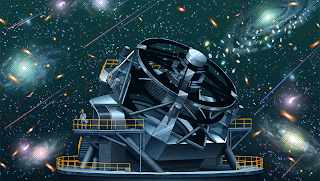 |
| Large Synoptic Survey Telescope (link below) |
Even as he installed the landmark camera that would capture the first convincing evidence of dark energy in the 1990s, Tony Tyson, an experimental cosmologist now at the University of California, Davis, knew it could be better. The camera’s power lay in its ability to collect more data than any other. But digital image sensors and computer processors were progressing so rapidly that the amount of data they could collect and store would soon be limited only by the size of the telescopes delivering light to them, and those were growing too. Confident that engineering trends would hold, Tyson envisioned a telescope project on a truly grand scale, one that could survey hundreds of attributes of billions of cosmological objects as they changed over time.
Tyson’s vision has come to life as the Large Synoptic Survey Telescope (LSST) project, a joint endeavor of more than 40 research institutions and national laboratories that has been ranked by the National Academy of Sciences as its top priority for the next ground-based astronomical facility. Set on a Chilean mountaintop, and slated for completion by the early 2020s, the 8.4-meter LSST will be equipped with a 3.2-billion-pixel digital camera that will scan 20 billion cosmological objects 800 times apiece over the course of a decade. That will generate well over 100 petabytes of data that anyone in the United States or Chile will be able to peruse at will. Displaying just one of the LSST’s full-sky images would require 1,500 high-definition TV screens.
Simon Foundation: A Digital Copy of the Universe, Encrypted


